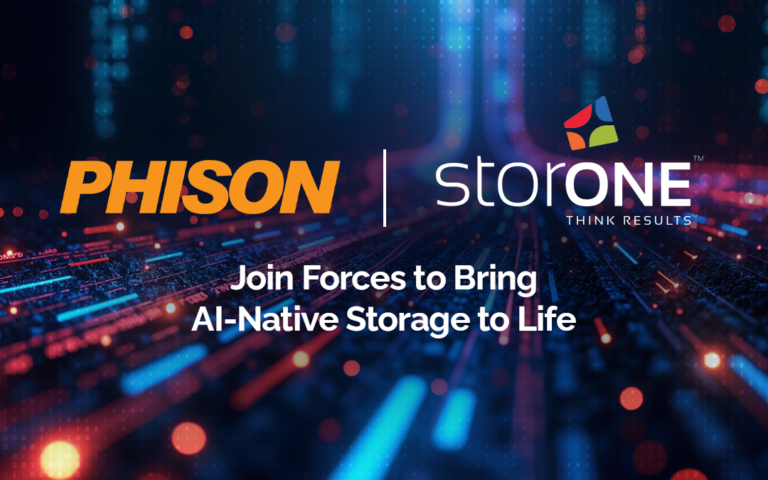To address backup storage shortcomings, vendors are trying to convince IT of the viability of All-Flash Backup. All-flash does help organizations improve their recovery point objectives (RPO) and Recovery Time Objectives (RTO) but is the cost of the improvement worth it? As our CEO mentioned in a recent blog, the first responsibility for the backup infrastructure is to act as an insurance policy. The cost of that policy must be substantially less than the cost of the item you are insuring (production storage).
What Does All-Flash Backup Fix?
There is no doubt that some flash is necessary for the modern backup architecture. A backup storage target armed with flash:
- Handles more frequent block-level incremental (BLI) backup jobs that lower recovery point objectives. Customers can potentially send hundreds of backup jobs every hour with flash media.
- Speeds the consolidation of the multiple BLI backup files into a new virtual or synthetic full. If consolidation can complete more quickly, customers can genuinely enable incremental forever, eliminating full backups permanently.
- Improves instant recovery performance, both the actual restoration of the virtual machine or application and its execution in the recovered state.
What Does All-Flash Backup Break?
Despite the potential of all-flash backup, it breaks the most basic insurance policy requirement; it costs almost as much as the thing it is insuring, production storage. All-Flash Backup breaks the economics of backup storage.
Vendors of All-Flash Backup:
- Forget, somewhat conveniently, the other side of the backup storage equation, the long-term retention of data. The overwhelming majority of recoveries are from data backed up less than 48 hours ago, which means IT will never access more than approximately 10% of the backup data they store.
- Eschew the validity of high-density hard disk drives as a means to store data long term, despite their 10X price advantage. They claim that slow recovery from media failure plus their performance compared to flash (despite the above) makes their use impractical.
- Need dozens of pieces of flash media to deliver any level of good performance. They can’t support the concept of a small flash tier to handle inbound backups and service recoveries.
- Can’t automatically move data to a lower-cost tier. Even though there is a far more economical tier available, they can’t support it. Since they can’t support it, they must take a stance that it isn’t viable.
Intelligent Backup Storage
How about bringing some intelligence to backup storage? The use case benefits from a high-performance data ingest tier, but it will also benefit from having a cost-effective retention tier.
An intelligent backup solution:
- Uses a relatively small flash tier. The flash tier should only be large enough to store the most recent backups. A five to twelve-drive flash tier using high-density flash drives is more than enough for most customers. However, it should be a tier, not a cache, which means the backup-storage software must protect data from media failure.
- Extracts maximum performance from a minimal number of drives. The raw performance of a five to twelve-drive flash tier is 300K to 500K IOPS or more; the Intelligent backup storage solution needs to extract that level of performance, so the customer does not have to buy dozens of flash drives.
- Automatically tiers data to a lower cost tier made of high-density hard disk drives. IT, however, does not have the time to manage data movement between these tiers, so the backup storage target needs to manage the process for them.
- Supports the highest-density hard disk drives possible, including 18TB and 20TB hard drives. Supporting these drives is more than simply inserting them into a drive bay.
- Recovers from a drive failure (RAID rebuild) in a few hours, not a few days. During the rebuild backup and recovery, performance is not impacted.
- Utilizes 90% of the capacity without performance impact. The utilization gives back hundreds of TBs of capacity for each PB.
- Can mix drives of different sizes within the same volume, providing a seamless migration-free future.
To meet these requirements, though, means rethinking the foundational storage elements. Most backup storage solutions add a few features to a 20+ year old legacy code base that can’t extract maximum utilization from today’s advanced media. All-Flash backup vendors use flash media as the easy way around the challenges and pass their inefficiency on to you in the form of a higher-cost backup infrastructure.

StorONE spent its first eight years doing the hard work that no other vendor addressed. We rewrote the foundational storage elements, creating a new, more efficient IO engine that extracts the full potential of today’s storage hardware (flash and hard disk drives). With it, we address a variety of use cases.
StorONE Thinks Results. Our S1:Backup solution is a shining example of how the efficiency of the StorONE engine delivers results to you, like improving RPO and RTO, lowering backup infrastructure cost, and elevating backup to be something more. S1:Backup is also a standby storage system ready to act as production storage in the case of a complete failure or ransomware corruption of your primary storage system.
Join us next week December 16th for a virtual whiteboard session, “All-Flash Backup vs. Intelligent Backup Storage,” as we drop the PowerPoint slides and chalk-talk through an in-depth comparison of the technologies.





